Photography and poetry come together at upcoming festival 8:59 AM (last hour)
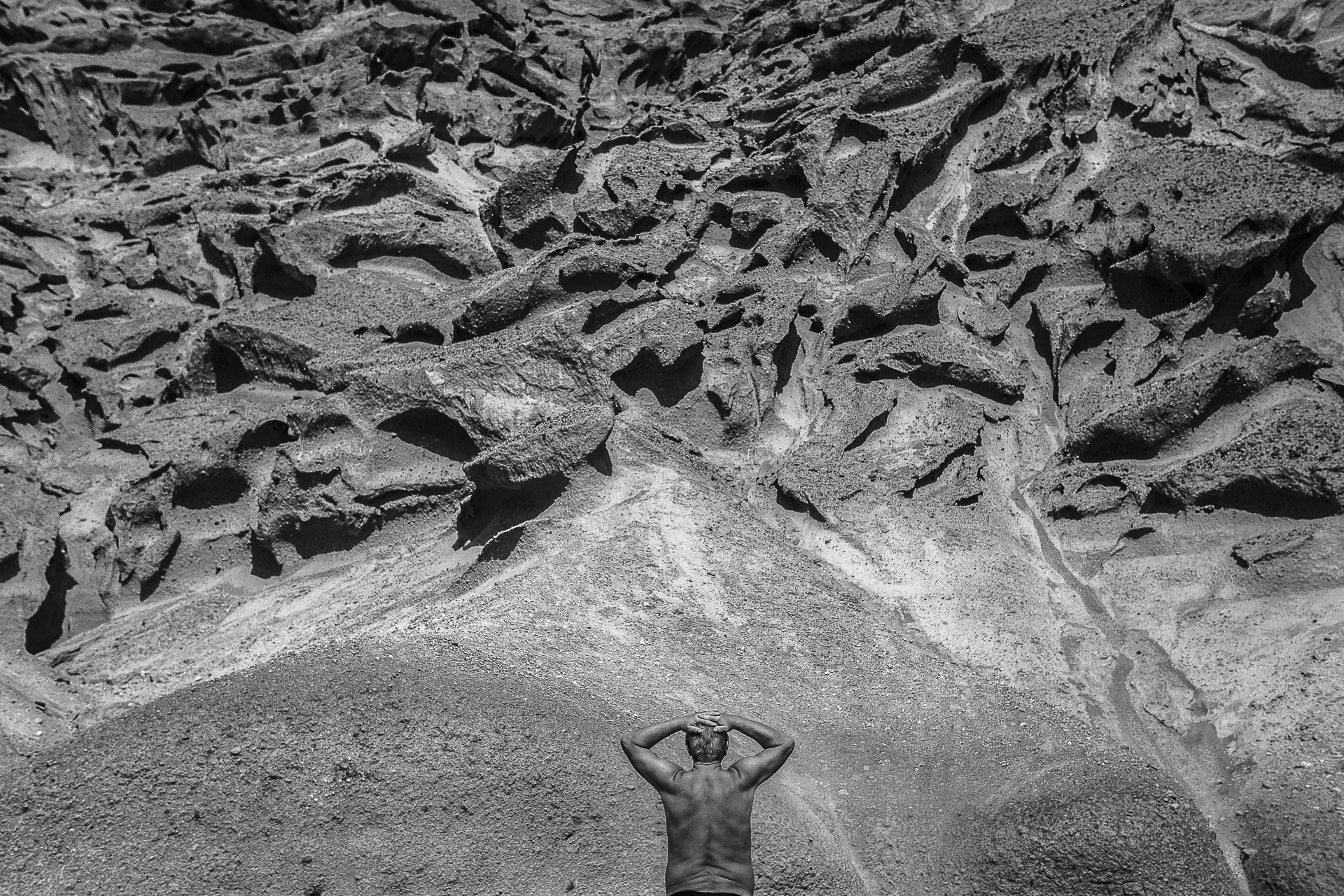
The third edition of the multidisciplinary Poetry Moves International Festival is coming up later this year, activating various locations and venues in Nicosia. Despite its title, organisers say this is not a poetry festival in the traditional sense but a platform for all artistic expression. Each year, a new theme is chosen and selected artists and poets present literary events but also a photography exhibition selected through an open call.
With preparations already underway for the October festival, the team has announced the theme for photography competition PhOETRY III, which is now open to both professional and amateur photographers.
In this competition, poetry and photography engage in a creative dialogue, intersecting, communicating and coexisting. The 2025 Festival theme Trees/Roots/Symbolism, draws inspiration from trees and their roots, approaching the theme both realistically and allegorically. The concept focuses on exploring the layered symbolism embodied by trees, acting as a connective thread between humanity, nature, and art. Trees are symbols deeply rooted in collective memory and culture.
They represent continuity and transformation, growth and decay, grounding and expansion. The theme goes beyond a romantic depiction of nature. Instead, it reflects our contemporary reality, shedding light on the fragile relationship we have with the natural world and the urgent need to redefine it.
Photographers are invited to submit images inspired by poetry from the following poets: Rabindranath Tagore, Hermann Hesse, Kahlil Gibran, Robert Desnos, Antonia Pozzi, Nikiforos Vrettakos, Nikos Nikolaou-Chatzimichail, Nadia Stylianou, Roxani Nicolaou, Daphne Nikita, Olga Economidou, Stavros X. Petrou, among others, under this theme. The 27 selected poems chosen by the festival for the photography competition can be found at https://www.poetry-moves-international-festival.com/xxvii-poems/. The website also has the competition rules and how to apply as well as the deadline (July 12).
Poetry Moves International Festival
Multidisciplinary poetry, art and photography festival. October 2025. Throughout Nicosia. Open call details for photography competition at https://www.poetry-moves-international-festival.com/
Everton stun Forest, Villa win, Leicester finally score 8:19 AM (2 hours ago)

Nottingham Forest’s Champions League qualification hopes were hit by a 1-0 defeat against Everton after Abdoulaye Doucoure scored a 94th-minute winner at the City Ground on Saturday.
Everton forward Dwight McNeil won possession in midfield after sloppy play from Forest, which summed up their dismal afternoon, and his pass rather fortuitously fell to Doucoure, who swept his shot past goalkeeper Matz Sels.
Third-placed Forest stay on 57 points from 32 games, four points clear of Chelsea in sixth position, though the London side have a game in hand. The top five qualify for the Champions League. Everton move up to 14th with 38 points from 32 matches.
Forest have been excellent at home this season but failed to create too many alarms in the Everton defence and it was the visitors who left it late but deservedly got the three points.
Villa strike late to overcome Southampton resistance
Aston Villa took time to break down home resistance before goals from substitutes Ollie Watkins, Donyell Malen and John McGinn led them to a 3-0 win at relegated Southampton in the Premier League on Saturday.
Watkins scored in the 73rd minute and Malen six minutes later after both came on midway through the second half to help lift Villa to fifth in the standings.
McGinn added the third as he followed up to convert the rebound after Aaron Ramsdale had stopped Marco Asensio’s stoppage-time penalty.
Ramsdale had earlier saved another spot-kick from Asensio.
Leicester draw 2-2 with Brighton to snap scoreless losing streak
Stephy Mavididi and Caleb Okoli scored for Leicester City as they twice came from behind to grab a 2-2 draw at Brighton & Hove Albion on Saturday and end a run of eight Premier League losses without scoring.
The shadow of relegation still hangs heavy over Leicester, who are 19th in the table on 18 points, two behind Ipswich Town and 14 adrift of Wolverhampton Wanderers in 17th spot with seven games left. Brighton are ninth on 48 points.
Joao Pedro struck from the penalty spot in the 31st minute after Conor Coady handled the ball, but Leicester levelled through the lively Mavididi seven minutes later, their first league goal since a 2-1 win over Tottenham Hotspur on January 26.
Pedro scored again from the spot 10 minutes after the break following a foul by Luke Thomas on Matt O’Riley, but Okoli stole in behind the defensive line to head home a free kick in the 74th minute and secure a deserved point for the visitors.
Christodoulides pays tribute to legacy of solidarity at Christodoula march 7:49 AM (2 hours ago)
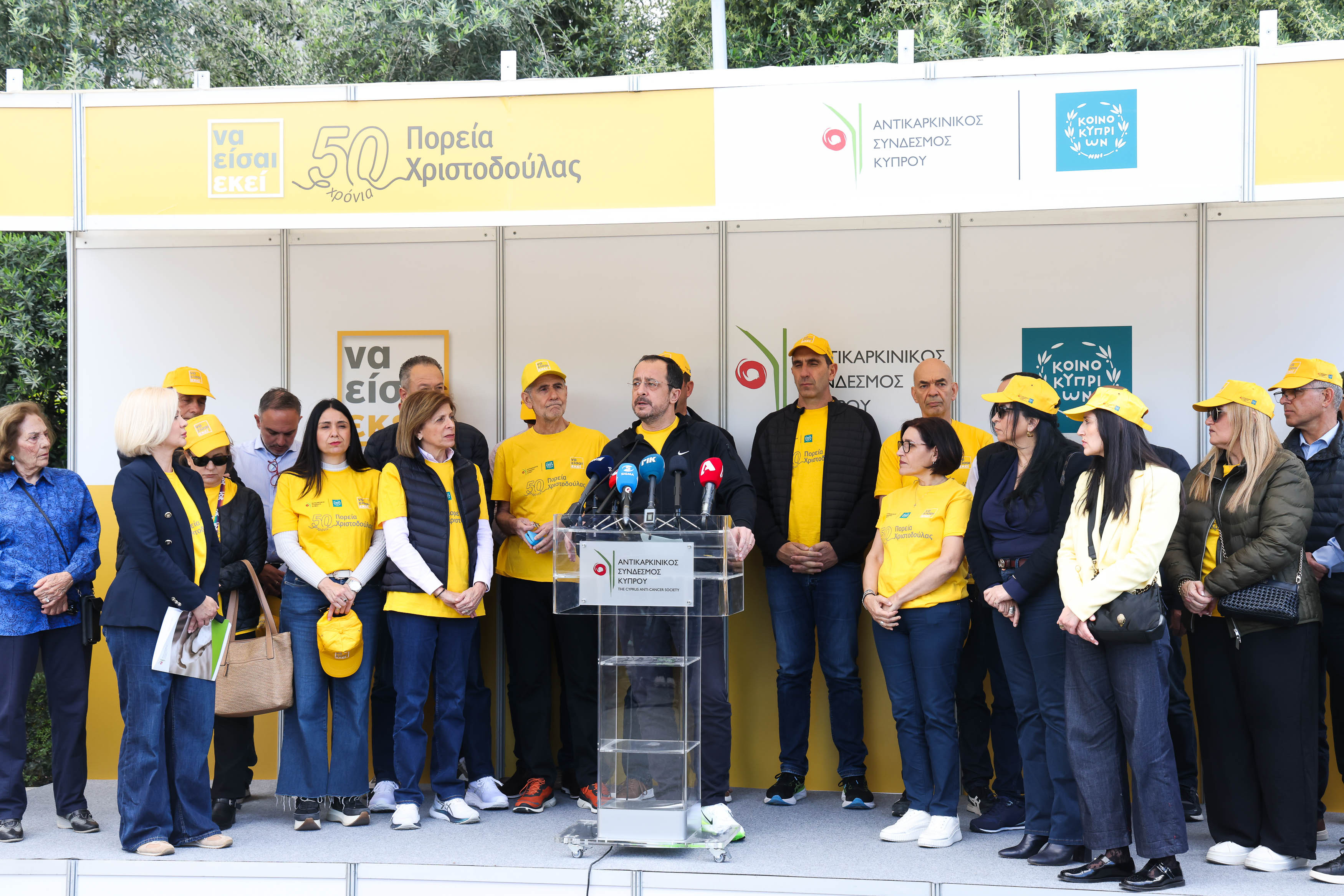
“Together, we continue the work of solidarity, giving and humanity,” said President Nikos Christodoulides, addressing the opening ceremony of the 50th Christodoula march held at the Arodafnousa palliative care centre.
In his speech, Christodoulides referred to the upcoming legislation on palliative care that will soon be submitted to the House of representatives, as well as the recent approval of the Patient Advocate bill – a newly established institution that, he noted, is particularly relevant to cancer patients.
“We carry on the journey started by visionary pioneers, holding on to the baton of hope for our fellow citizens fighting cancer,” the president said, recalling that the Christodoula march was founded in the aftermath of the devastation caused by the Turkish invasion of 1974.
“I am pleased that this effort not only continues, but grows stronger each year, honouring the vision and struggle of the unforgettable Christodoula — a woman who became a symbol of volunteerism and social compassion,” he added.
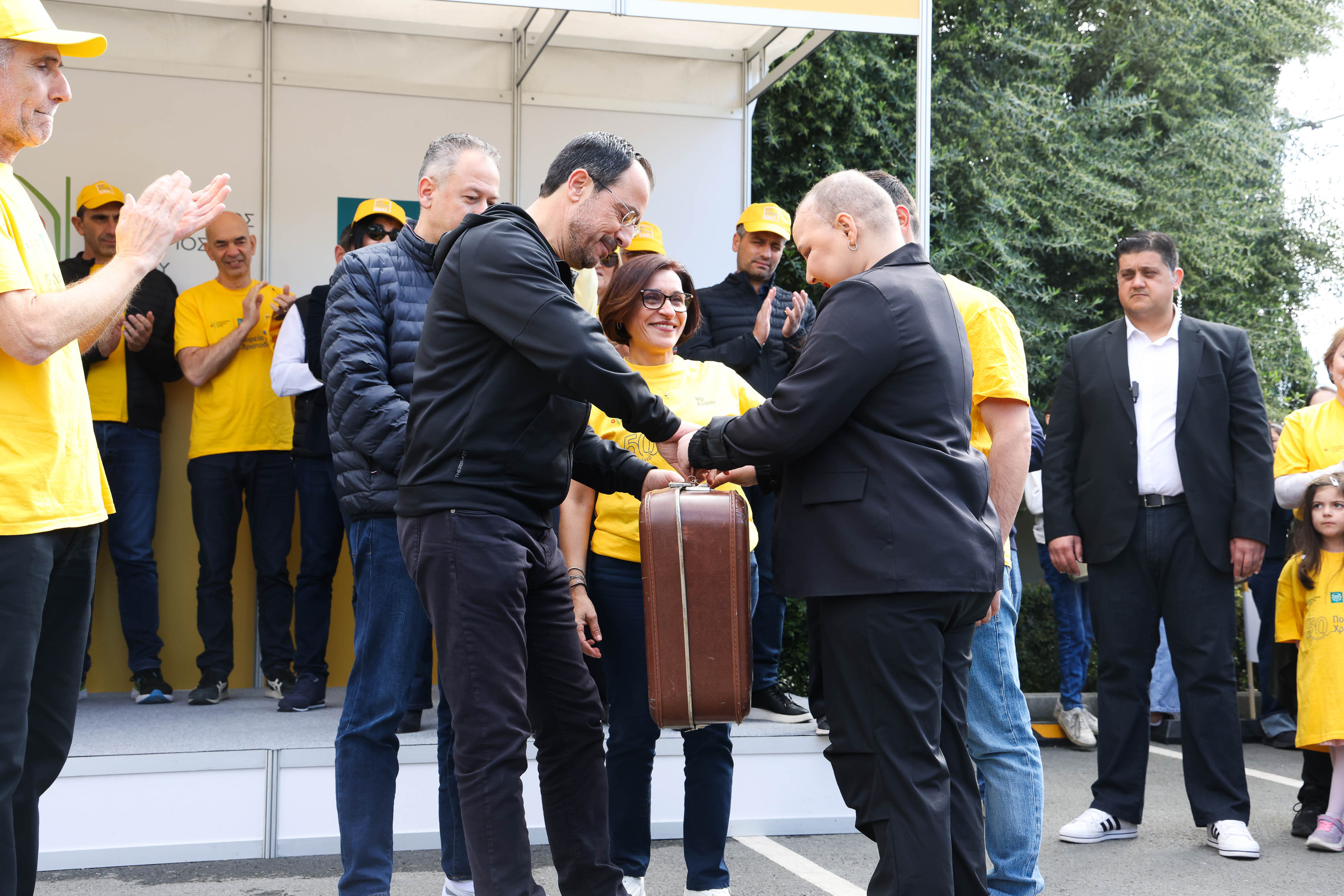
The president praised the tangible impact of the Christodoula march, which supports the Cyprus Anti-Cancer Society and its ongoing provision of essential services. These include medical assistance, nursing care, home visits and psychological support for patients and their families.
He concluded by congratulating the Cyprus Anti-Cancer Society, the Bank of Cyprus for its long-standing support and the many volunteers “who dedicate their time and resources to keep Christodoula’s work and legacy alive.”
The event was attended by, among others, Interior Minister Constantinos Ioannou and Transport Minister Alexis Vafeades.
XRP price prediction: Abandon hope of Ripple at $7, Mutuum Finance (MUTM) 52x potential is what investors are looking for 7:40 AM (2 hours ago)

The price of XRP shows minimal growth after a recent 15% rise because the crypto market volatility made it slow down from its target at the $2 resistance point. The currency currently available at $1.98 stands to grow to $2.50 according to market analysts if positive trading patterns persist. The hopes for reaching a $7 valuation diminish because of increasing technical difficulties and declining investor interests.
The presale of Mutuum Finance (MUTM) in its fourth phase attracts attention with average sales of $6.65 million through +405 million token distribution. The upcoming phase two price increase of the token to $0.03 will trigger potential gains of 52x after launch when the token is valued at $0.025 during presale.
Mutuum Finance gains momentum
Since its launch Mutuum Finance (MUTM) has reached the fourth stage of its presale period while collecting an audience of over 8200 holders. The demand for Mutuum Finance arose from its decentralized lending system combined with mtTokens which automatically accrue interest throughout time. The current value of $0.025 purchased by early investors will result in a 140% profit when MUTM starts trading at $0.06 during its listings.
The potential market value projection after launch anticipates MUTM will rise to $1.50 by 2025 thus delivering a 5900% profit gain to phase-four purchasers. Mutuum Finance includes buy pressure directly in its protocol through revenue distribution which buys back MUTM tokens and distributes them to stakers to keep demand supported.

Presale dynamics create urgency
Phase four is moving quickly with phase five set to elevate pricing by 20%. New investors who come on board now also bag cheap tokens before the ascent to $0.03, allowing for unrealized gains from the get-go. The presale is structured to rise 11 phases, ultimately listing at $0.06, a real urgency now compound by the launch of a new dashboard tracking the top 50 holders. These leaders receive earning tokens as a bonus encouraging them to hold for long periods and help alleviate sells. Phase one sold out fast, and the current window is one of the last opportunities to get MUTM at below $0.03.
Strategic moves and future plans
Mutuum Finance is concluding its audit with CertiK for smart contracts so people can trust the platform better. Results of the audit will appear on social channels. The implementation of mtTokens with peer-to-peer lending features allows users to deposit ETH or DAI for earning yield-bearing assets.
The DeFi development roadmap of the team involves the deployment of both an overcollateralized stablecoin and the integration of several useful DeFi applications. The advance XRP faces in its ecosystem remains limited because of lingering regulatory confusion and vital use cases being absent.
Bulls who continue to anticipate a $2.50 price target for XRP have alternative opportunities to achieve 10x returns through Mutuum Finance (MUTM). First purchasers have already secured triple-digit gains and the market predictions exceed typical gains for stakeholders who joined afterward. The presale deadline now puts late investors into an intense state of fear of missing out on this opportunity.
Securing early advantages
Asymmetric opportunities are a rarity in the crypto market but Mutuum Finance (MUTM) breaks this trend. Its hybrid approach—combining lending protocols and tokenized incentives—is a rarity among projects balancing innovation and profitability. With CertiK audits in progress and exchange listings around the corner, the token’s trajectory is firmly weighted towards the upward. Those fund managers, not subscribing to the presale, put themselves at risk of missing this generational entry point.
For those deciding between XRP’s shaky ascension versus MUTM’s algorithmic advantage, the answer is clear. One token wrestles against resistance levels, the other creates them.
For more information about Mutuum Finance (MUTM) visit the links below:Website: https://www.mutuum.finance/
Linktree: https://linktr.ee/mutuumfinance
DISCLAIMER – “Views Expressed Disclaimer: This article is not financial advice. Cryptocurrencies are volatile and unpredictable. Due diligence and caution are paramount. Views and opinions expressed are those of the authors and do not reflect the official position of any other author, agency, organization, employer or company, including NEO CYMED PUBLISHING LIMITED, which is the publishing company performing under the name Cyprus-Mail…more
US excludes smartphones, computers from Trump’s reciprocal tariffs 7:33 AM (2 hours ago)

The Trump administration has granted tariff exclusions for smartphones, computers and other electronics imports supplied largely by China, sparing them from much of President Donald Trump’s steep 125% duties.
In a notice to shippers, the U.S. Customs and Border Protection agency published a list of tariff codes that will be excluded from the duties. The exclusions are retroactively to 12:01 a.m. on April 5.
The U.S. CBP listed 20 product categories, including the very broad 8471 code for all computers, laptops and disc drives and automatic data processing. It also included semiconductor devices, equipment, memory chips and flat panel displays.
The notice did not provide an explanation for the Trump administration’s move, but the late-night exclusion provides welcome relief to major U.s. technology firms, including Apple AAPL.O Dell Technologies and countless other importers.
The move represents another step back from Trump’s maximalist tariff approach, including several escalations of his duties on Chinese goods.
Dogecoin price volatility spurs DOGE whales to invest heavily in this $0.025 DeFi Altcoin 7:10 AM (3 hours ago)

Dogecoin’s 70% price crash from December 2024 to now has sent investors looking for replacements. Having once been above $0.46, DOGE now sits around $0.1475 during a wider memecoin market crash that saw $76 billion in value wiped off. As 1.32 billion DOGE tokens are shed by whales within 48 hours, interest is shifting to Mutuum Finance (MUTM), a flagging DeFi at the fourth presale phase, asking $0.025. Having raised $6.65 million with 8,200 holders already, the structured lending model and built-in buy pressure of MUTM are appealing to disillusioned DOGE investors looking for a reliable investment with explosive growth potential.
The presale momentum of Mutual Finance
Phase 4 of Mutuum Finance‘s presale is gaining momentum as Dogecoin’s volatility continues to rise. With over 405 million MUTM tokens sold at a price set at interval of $0.025 When this phase finishes, the following stage will raise the token’s price by 20% to $0.03—a gap that’s closing quickly for investors looking to lock in near-term gains.
Astute early adopters at this tier will benefit from 140% returns when MUTM debuts at $0.06 on exchanges, a number baked into its very tokenomics. Post-launch, on-chain metrics focused on DeFi adoption rates forecast a rise to $3.50 for the token by the end of 2025, which would equal a 13,900% ROI for early investors.
The lightning speed of the presale reflects rising confidence. A live leaderboard featuring the top 50 holders of MUTM is displayed on a new dashboard, with the leading passive holders slated to earn bonus tokens for holding their positions. This gamification adds an element of urgency, as actors strive to gain early-stage advantages before the platform is officially launched.

Built-in demand mechanisms
While Dogecoin thrives on meme cycles, Mutuum Finance derives its worth from its undeniable utility. It works as a lending protocol where users deposit assets (such as ETH or stablecoins) in exchange for interest-bearing mtTokens (i.e., mtETH) that appreciate in value over time. These tokens are tradeable and usable on DeFi platforms, providing smooth liquidity.
At the same time, a buy-and-distributing mechanism reroutes platform fees to repurchase MUTM from the open markets and distribute the tokens back to stakers. This dual mechanism not only creates continuous buy pressure but also rewards long-term holders — unlike DOGE, which hangs on social media hype.
Positions must be overcollateralized in order to ensure system stability for those taking out loans. A $5,000 USDT loan, for example, needs $7,000 in ETH collateral, curbing the chances of default occurrence. And this is where this model is being likened to traditional platforms such as Aave, but with one key difference — the peer-to-peer aspect of Mutuum Finance allows users to negotiate for niche assets like SHIB or DOGE directly with each other to close gaps in traditional lending markets.
Security and strategic growth
Amidst the flight to safety of Dogecoin whales, Mutuum Finance is completing a Certik audit to prove its smart contracts — an achievement that will enhance investor confidence. As DOGE struggles with inflationary tokenomics and then lack of use cases, the roadmap of MUTM will include the issuance of an over-collateralized stablecoin backed by user deposits, meaning that it has a future in DeFi also.
This measured approach is in contrast with meme coins’ lack of forethought. Where many other DeFi projects chase viral trends, Mutuum Finance is focused on protocol resilience, making it a staple not a speculative gamble. As Phase 4 comes to a close, the opportunity to snag tokens beneath $0.03 is dwindling fast!
The turbulence of Dogecoin has unintentionally put projects that incorporated innovation with reliability in the spotlight. In an era of memecoin-chasing investors, Mutuum Finance provides a pivot to rational growth, one presale phase at a time.
For more information about Mutuum Finance (MUTM) visit the links below:
Website: https://www.mutuum.finance/
Linktree: https://linktr.ee/mutuumfinance
DISCLAIMER – “Views Expressed Disclaimer: This article is not financial advice. Cryptocurrencies are volatile and unpredictable. Due diligence and caution are paramount. Views and opinions expressed are those of the authors and do not reflect the official position of any other author, agency, organization, employer or company, including NEO CYMED PUBLISHING LIMITED, which is the publishing company performing under the name Cyprus-Mail…more
Man arrested for possession of protected birds and illegal weapons 6:39 AM (3 hours ago)
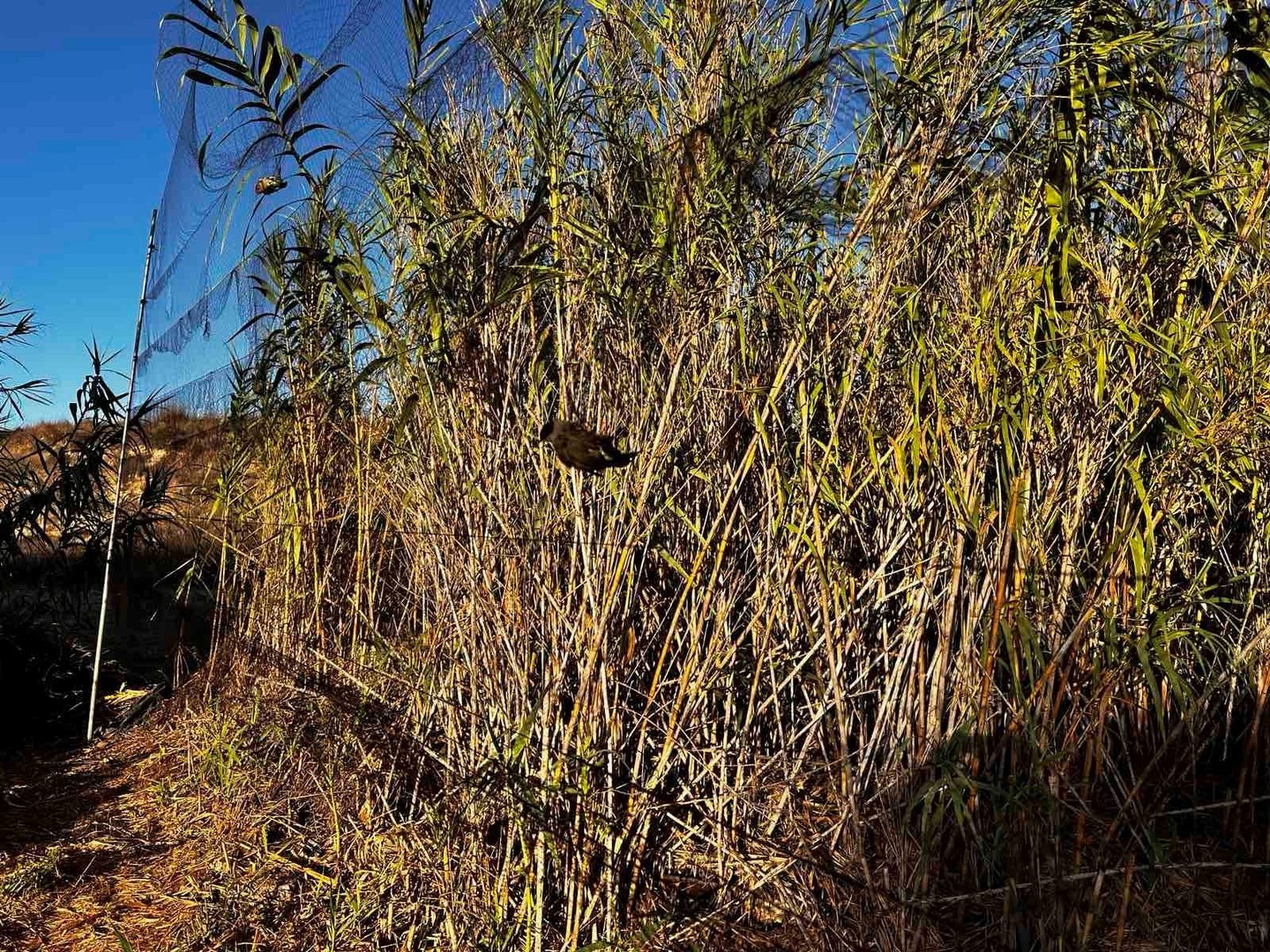
A 40-year-old man was arrested on Friday in connection with an investigation into the possession of protected wild birds and illegal explosives and firearms. The arrest followed a series of raids and discoveries by the authorities.
At around 9am on Thursday, a member of the Game and Fauna Service found illegal bird trapping equipment in a field on the man’s property, located in a fenced area near his home in Paphos.
The discovery came as part of an ongoing investigation into the death of an eagle.
Further searches were carried out by both police officers and members of the Game and Fauna Service, with court warrants in hand. In the man’s storage shed, they found an alarming assortment of illegal items, including 47 bird traps, three traps for finches, a bird sound imitation device, 17 rounds of restricted ammunition, two boxes of factory-made ground fireworks, and 60 cleaned partridges, stored in a freezer.
In addition, packages containing various wild birds were discovered in another freezer in the kitchen.
Inside the house, investigators uncovered a specially designed display case that contained an air rifle, a single-barrel hunting shotgun, 48 rounds of prohibited ammunition, three more bird sound imitation devices, and other items that were seized as evidence.
The 40-year-old man was arrested in the evening after a court warrant was issued against him. He was taken into custody to assist with ongoing investigations.
The Paphos criminal investigation department is continuing its work on the case.
UK to take emergency control of British Steel, with nationalisation on the table 6:29 AM (4 hours ago)
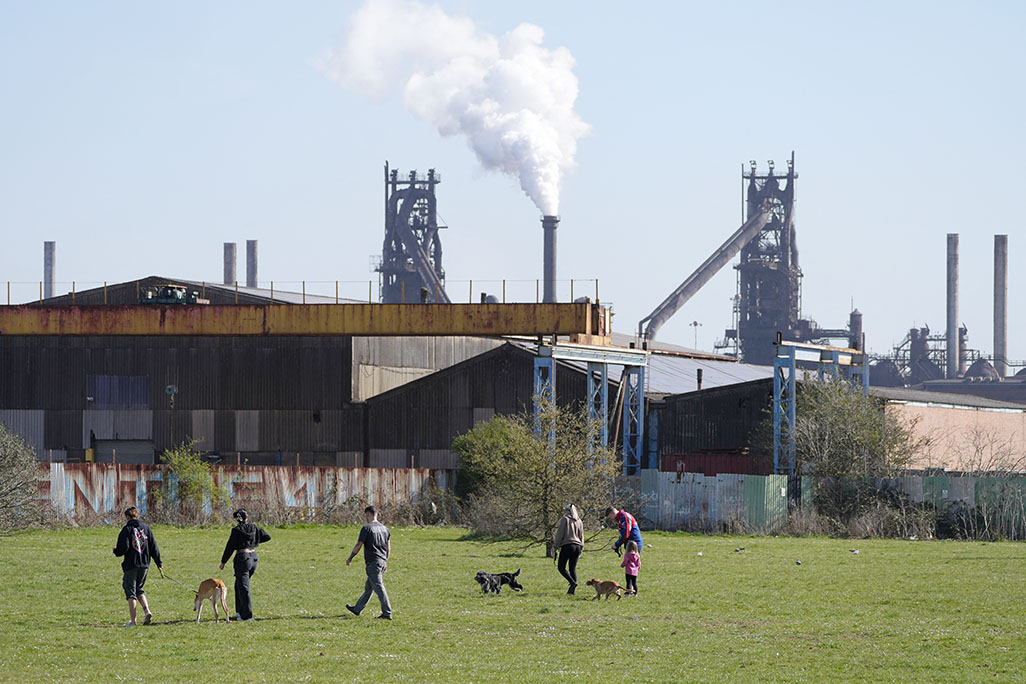
Britain moved to take control of British Steel and keep its blast furnaces open on Saturday, as a minister told an emergency parliamentary session that a full nationalisation of the UK’s last maker of virgin steel was becoming increasingly likely.
The company, owned by China’s Jingye Group, employs 3,500 people at its Scunthorpe plant, whose future had been in question after the government and the company failed to agree a funding deal to switch to greener steel production.
The government recalled lawmakers, who had been on Easter recess, in order to pass a law enabling it to direct the company’s board and workforce, ensure they get paid, and order the raw materials to keep the blast furnace running.
Prime Minister Keir Starmer said that he was taking action to avert the imminent closure of the blast furnaces, which are operating at a loss of 700,000 pounds ($915,600) a day.
“The bill will go through today… and that means that we will then be in control of the site,” Starmer said on a visit to the steelworks.
He acknowledged that the emergency law was “pretty unprecedented”, but said it meant there would be a future for steel in Britain and that it was in the national interest.
The recall of parliament for a Saturday sitting during a recess is the first since the Falklands War in 1982. Addressing lawmakers, business minister Jonathan Reynolds said the bill would give more time to negotiate a permanent future for British Steel.
“A transfer of ownership to the state remains on the table, and it may well at this stage, given the behaviour of the company, be the likely option,” Reynolds told lawmakers, saying he still hoped to partner with the private sector to secure its long-term future.
“A failure to act today would prevent any more desirable outcome from even being considered.”
The bill cleared its initial stages in parliament’s House of Commons without anyone attempting to vote it down.
STRATEGY PENDING
The closure of the furnaces would leave Britain as the only G7 country unable to produce so-called virgin steel from iron ore, coke and other inputs.
British Steel was already struggling in an over-supplied global market before the rise in energy costs of recent years. U.S. tariffs of 25% on all steel imports, taking effect in March, delivered another blow.
The U.S. receives about 5% of British steel exports, worth 400 million pounds a year, according to industry body UK Steel.
Reynolds said the issues impacting British Steel went beyond those tariffs, though he would seek to negotiate to remove them.
The government had already earmarked 2.5 billion pounds for the steel industry, saying it would publish a strategy for the sector in spring 2025. Funding to keep the plant running would come from existing budgets, the government said.
Reynolds said Britain would be dependent on foreign imports if British Steel’s Scunthorpe furnaces were to close. UK Steel said it welcomed the proposed law, as did unions representing steelworkers.
If British Steel were nationalised it would be the biggest state rescue since a number of banks were taken into government hands in 2008.
Less carbon-intensive electric arc furnaces, which make new steel from scrap, are being built at Tata Steel’s Port Talbot site, following a government support package worth 500 million pounds.
The two blast furnaces at Port Talbot closed last year, and the new electric furnace will not start producing steel until late 2027 or early 2028.
Alcaraz ousts Davidovich Fokina to move into Monte Carlo final 6:19 AM (4 hours ago)

Carlos Alcaraz stormed into his first Masters final in 13 months when he beat Alejandro Davidovich Fokina 7-6(2) 6-4 on Saturday, but not before his Spanish compatriot saved five match points in a gruelling encounter.
Second seed Alcaraz found it difficult to break Davidovich Fokina, succeeding only three times in 19 attempts, and he also wasted three set points in an opening set that lasted over an hour.
Davidovich Fokina was imperious in his defensive game but Alcaraz lifted his service in the second set, in which he did not face a single break point.
“It’s been a long time,” Alcaraz said after reaching his first Masters final since he won at Indian Wells last year.
“I just had to be patient and believe that this moment was going to come again. Sometimes the people are not patient, they want me to make the final in every tournament.”
The 21-year-old sealed the win with a sizzling forehand winner down the line to move into his first final in Monte Carlo.
The two shared a warm embrace at the net and a laugh before Alcaraz praised his compatriot.
“I think I played really good tennis from the beginning until the last point,” Alcaraz added.
“I tried to take the chances he gave me in the match. He saved a lot of break points and match points, but I’m really happy… The most important thing is that I’m feeling great physically.”
Alcaraz will play either Lorenzo Musetti or Alex de Minaur in Sunday’s final.
BMW issues urgent airbag recall for 441 vehicles in Cyprus 5:56 AM (4 hours ago)

Charalambos Pilakoutas Ltd has issued a new recall for 441 vehicles in Cyprus, following an important safety alert from the department of road transport. The recall affects BMW vehicles where the driver’s airbag needs to be replaced due to safety concerns.
The department of road transport confirmed that this action comes as part of a broader recall from BMW. The company has made the decision to replace the driver’s airbag in affected models after receiving information from the manufacturer.
Car owners whose vehicles are affected have already been contacted. Those with a mobile phone number registered in the department’s system have received an SMS alert. The message includes important details about the recall and further steps to follow.
The department also reiterated a warning from December 2024, urging vehicle owners to avoid using their cars until the airbag replacement is completed. If this is not possible, drivers are encouraged to take steps to reduce the risk, such as using alternative transportation.
Owners of affected vehicles are urged to contact Char. Pilakoutas Ltd, the official distributor for BMW in Cyprus, for more instructions and to arrange the necessary repairs.
De Bruyne shines as Man City roar back to crush Palace 5-2 5:41 AM (4 hours ago)

Kevin de Bruyne helped Manchester City stage a superb comeback from 2-0 down as he scored one and helped create two goals in an emphatic 5-2 win over Crystal Palace in the Premier League on Saturday.
Palace went 2-0 up in the first 21 minutes through Eberechi Eze and Chris Richards, but captain De Bruyne netted a free kick from 25 yards out in the 33rd minute and sent in the cross that led to Omar Marmoush’s strike three minutes later.
De Bruyne assisted as City took the lead through Mateo Kovacic 80 seconds into the second half, and James McAtee doubled their advantage from keeper Ederson’s long ball.
Nico O’Reilly added City’s fifth in the 79th minute as the champions provisionally climbed to fourth in the table, two points ahead of fifth-placed Chelsea who have played a game less.
Isle of Skye footprints give a tranquil snapshot of dinosaur life 5:38 AM (4 hours ago)

It is the site of a dramatic moment in Scottish history. The Isle of Skye’s rocky shoreline is where Charles Edward Stuart – known as Bonnie Prince Charlie – arrived by boat disguised as a maid to hide from the English in 1746 after his defeat at the Battle of Culloden.
But this celebrated claimant to the British throne was not the only one to make tracks at what is now called Prince Charles Point. Some 167 million years earlier during the Jurassic Period, large dinosaurs left footprints at the same place. Researchers now have identified 131 fossilized tracks produced by meat-eating and plant-eating dinosaurs as they milled about what was a subtropical freshwater lagoonal environment.
This extraordinary batch of trackways is important not only because it dates to a time underrepresented in the fossil record but because it shows a scene of routine life among the denizens of this bygone ecosystem, akin to animals of various species today congregating at watering holes on the African savannah.
“It’s very much a tranquil snapshot of dinosaurs gathering, perhaps to drink or move between vegetated areas,” said Tone Blakesley, a University of Edinburgh graduate student in paleontology and lead author of the study published on Wednesday in the journal PLOS One. “The plant-eating dinosaurs were at that point not under any immediate threat from the predators.”
“The trackways provide us with insight into how these dinosaurs behaved and interacted with their environment – something bones alone cannot provide,” Blakesley added.
The researchers cannot be certain of the exact species that left the tracks, but their sizes and shapes offer good clues.
All meat-eating dinosaurs were part of a group called theropods. The ones that made the Isle of Skye tracks were part of a family called megalosaurs. One possibility is Megalosaurus, which lived about 100 million years before its distant relative Tyrannosaurus, measured about 20 feet (6 meters) long, walked on two legs and had a mouthful of large serrated teeth. It was one of the first dinosaurs discovered by scientists and, in 1824, became the first one to be given a name.
The plant-eaters that left footprints were part of the group called sauropods, known for their long necks, four pillar-like legs, small heads and teeth adapted for consuming vegetation. One possibility is Cetiosaurus, about 52 feet (16 meters) long.
The theropod footprints each measure about 18 inches (45 cm) long, with imprints of three toes, pads housing foot muscles and sharp claws. The sauropod footprints are different, about 20 inches (50 cm) long with a round shape widening a bit toward the front, and sometimes preserving marks from four, short and stubby triangular toes.
In all, about two dozen individual dinosaurs left the footprints. The researchers made digital models of each trackway after observing the site with a drone.
These dinosaurs lived at the heart of a vast river estuary surrounded by forested areas composed of conifers, tree ferns and ginkgoes, like those still in existence today.
The footprints of the theropods and sauropods were found in lagoonal settings while tracks of other dinosaurs – plant-eating stegosaurs and ornithopods – were found in what were drier landscapes, away from the lagoons.
Sharing this ecosystem were crocodiles, salamanders, lizards, turtles, small mammals and flying reptiles called pterosaurs. This time period predates the earliest known bird fossils.
“Footprints of this age are very rare, but when we find them, they provide direct evidence of behavior,” University of Edinburgh paleontologist and study senior author Steve Brusatte said.
Brusatte highlighted the intersection of prehistory and Scottish history. Bonnie Prince Charlie – a romanticized hero of Scotland – survived his flight from the English, though his aspirations of kingship and the Jacobite rebellion he led were dashed.
“When the prince was running for his life, he was running on the footsteps of Jurassic dinosaurs. And he did make it. He hid out on Skye for a while, then was able to escape to France,” Brusatte said.
Shiba Inu Price Prediction: SHIB bulls are confident, but analysts say Mutuum Finance (MUTM) offers a better path to 38x gains in the 2025 run 5:31 AM (4 hours ago)

At the moment, Shiba Inu (SHIB) is trading at $0.0000121, down 2%, with mixed analyst signals. While leading trader Javon Marks says a 550% increase to $0.000155 is possible if history repeats itself, doubt remains. The rapid bullish momentum of Shiba Inu has been cast in the shadow of a 75% drop in its burn rate and an $8 billion dip in its market cap over the span of the 30-day period. Technical charts show an ascending triangle pattern, but the $0.0000124 resistance has been unbroken.
At the same time, Mutuum Finance (MUTM) has become a magnet for investors looking for predictable returns, with its upcoming presale already raising $6,650,000 and issuing more than 405 million tokens, spread across 8,200 holders.
The uncertainty about Shiba Inu’s future
What Shiba Inu’s recent price action relies on is differing narratives. Higher lows could be seen on the four-hour charts, indicating gradual buyer interest, even though sluggish momentum remains. Marks also points out a hidden bullish divergence, a pattern that was previously seen ahead of a 900% historic SHIB rally in 2021.
But the Relative Strength Index (RSI) at 48 and fading speculative activity in meme coins casts doubt. The downward spiral of the burn rates continues to erode the free SHIB supply reduction capacity, which means, unless buy volumes BURST, SHIB is left in consolidation for the long haul.
Mutuum Finance gains momentum
On the other hand, Mutuum Finance (MUTM) employs structured growth strategies, now progressing through Phase 4 of its 11-phase presale. At $0.025, the token is set for immediate returns for existing investors to $0.03 upon entering Phase 5, a further surge of 20%.
Its inherent tokenomics promise a 140% payoff at the planned $0.06 exchange listing, and analysts anticipate post-listing targets in the vicinity of $0.95 — a 38x leap from today’s price. This vision comes by way of Mutuum Finance’s lending protocols that offer a decentralized borrowing pools and interest-bearing mtTokens, creating real-world utility.

Presale momentum builds
Since launch, more than 8,200 holders have flocked to the project, attracted by features such as revenue-driven token buybacks and staking rewards. A newly implemented dashboard displays a leaderboard that ranks the top 50 token holders, awarding them bonus rewards for retaining their spots — this is an initiative which aligns with an effort to create more community engagement. As Phase 4 moves along at pace, investors are left with less and less time to get their hands on tokens at their current price point before the next jump.
Confidence built on strategic tokenomics
This model is open to both, however, the pros and cons of each participant’s risk profiles will ultimately dictate how they navigate this landscape and that is where your lending protocols like Mutuum Finance comes into play which focuses on overcollateralized loans with dynamic interest rates, suitable for the risk-averse participants.
20% of presale funds are set aside for liquidity pools on the platform, facilitating smooth trading after launch. Smart contracts are being rigorously assessed by Certik, and results will soon be made publicly available — a move that reinforces transparency. These factors, alongside its robust peer-to-peer lending functionalities and upcoming integration with stablecoins, strongly position MUTM for continued growth in 2025.
Last chance to get an edge
With Shiba Inu running with the bulls’ sentiment, Mutuum Finance (MUTM) offers a countable opportunity. Phase 4’s $0.025 entry point comes before a 20% gain at the next level as well before long-term targets that dwarf meme coin volatility. Having a foundation of audit transparency, user incentives and organic demand via utility is rarely seen in speculative assets, yet the project is keen to bridge the gap between traditional finance and DeFi through its solution. For those focused on decisive entry points instead of hype, the presale launch of Mutuum Finance is a key entrance point.
For more information about Mutuum Finance (MUTM) visit the links below:
Website: https://www.mutuum.finance/
Linktree: https://linktr.ee/mutuumfinance
DISCLAIMER – “Views Expressed Disclaimer: This article is not financial advice. Cryptocurrencies are volatile and unpredictable. Due diligence and caution are paramount. Views and opinions expressed are those of the authors and do not reflect the official position of any other author, agency, organization, employer or company, including NEO CYMED PUBLISHING LIMITED, which is the publishing company performing under the name Cyprus-Mail…more
EU ambassadors visit Paphos to honour shared heritage 5:29 AM (4 hours ago)
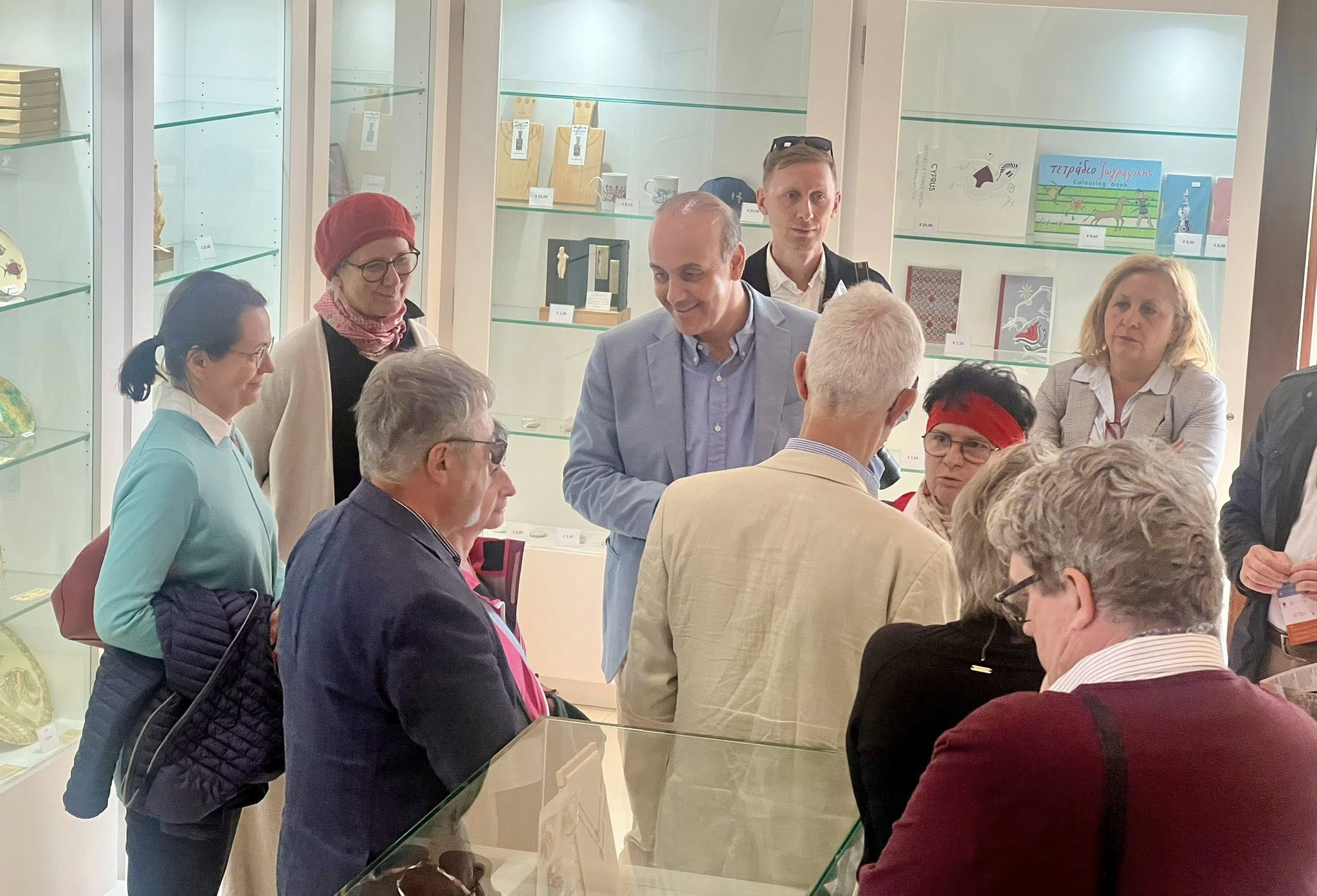
Ten ambassadors from EU member states visited the Kato Paphos Archaeological Park on Friday, in an initiative led by the Embassy of Poland in Cyprus. The visit aimed to spotlight the cultural heritage of Paphos and its importance to Europe’s collective identity.
According to a statement from Paphos municipality, the ambassadors represented Austria, Ireland, the Netherlands, Hungary, the Czech Republic, Romania, Spain, Slovakia, Poland, and Italy.
Paphos mayor, Phedonas Phedonos, welcomed the diplomats at the park’s entrance. There, a brief discussion took place on the city’s historical value and the shared European values that connect its people.
The ambassadors were then guided through the site by archaeologist Eudoxia Papoutsi, who offered a thorough presentation on the park’s history. Her expert insights gave the delegation a deeper understanding of Paphos’ archaeological importance and its cultural roots.
The visit was described by the municipality as a “clear recognition of Paphos’ position as a cultural pillar within the European family.” It also reinforced the spirit of cooperation and mutual understanding among EU nations.
Paphos municipality extended warm thanks to the Polish Embassy for its initiative, as well as to all participating ambassadors for showing active interest in the city and its heritage.
Mangione lawyers ask judge to prevent prosecutors from seeking death penalty 5:21 AM (5 hours ago)

Luigi Mangione’s lawyers on Friday asked a judge to prevent the U.S. government from seeking the death penalty in a case accusing him of shooting and killing the CEO of UnitedHealth Group’s UNH.N insurance division, in New York last year.
Mangione’s lawyers said in a filing in New York federal court that U.S. Attorney General Pam Bondi’s April 1 announcement that prosecutors would seek the death penalty was “unapologetically political” and breached government protocols for death penalty decisions.
“The United States government intends to kill Mr. Mangione as a political stunt,” his lawyers said.
A spokesman for the Manhattan U.S. Attorney’s office, which brought the charges, declined to comment.
Mangione, 26, has pleaded not guilty to New York state charges of murder as an act of terrorism and weapons offenses. New York does not have the death penalty for state charges.
Mangione has not yet entered a plea in a parallel federal case where Bondi said prosecutors would seek the death penalty.
In an April 1 statement, Bondi said Thompson’s murder was a “premeditated, cold-blooded assassination that shocked America.”
“After careful consideration, I have directed federal prosecutors to seek the death penalty in this case as we carry out President Trump’s agenda to stop violent crime and Make America Safe Again,” Bondi said.
In their Friday court filing, Mangione’s lawyers said the government failed to follow protocols for death penalty decisions, which include a lengthy investigation and opportunities for defense lawyers to push back.
The lawyers also cited a television appearance where Bondi said she ordered prosecutors to seek the death penalty because the victim was a CEO.
“Counsel is aware of no provision in the death penalty statute or in the Department of Justice’s death penalty protocol that allows for consideration of the social, economic or professional status of an alleged homicide victim in determining whether to seek the death penalty,” Mangione’s lawyers said.
If Mangione is convicted in the federal case, the jury would determine in a separate phase of the trial whether to recommend the death penalty. Any such recommendation must be unanimous, and the judge would be required to impose it.
Brian Thompson, the deceased CEO of UnitedHealth Group’s insurance division, was shot dead on December 4 outside a Midtown Manhattan hotel, where the company was gathering for an investor conference.
The brazen killing of Thompson and ensuing five-day manhunt captivated Americans.
While public officials condemned the killing, some Americans have cheered Mangione, saying he drew attention to steep U.S. healthcare costs and the power of health insurers to refuse payment for some treatments. He is currently being held in federal lockup in Brooklyn.
Greece’s celebration of Spring 5:00 AM (5 hours ago)
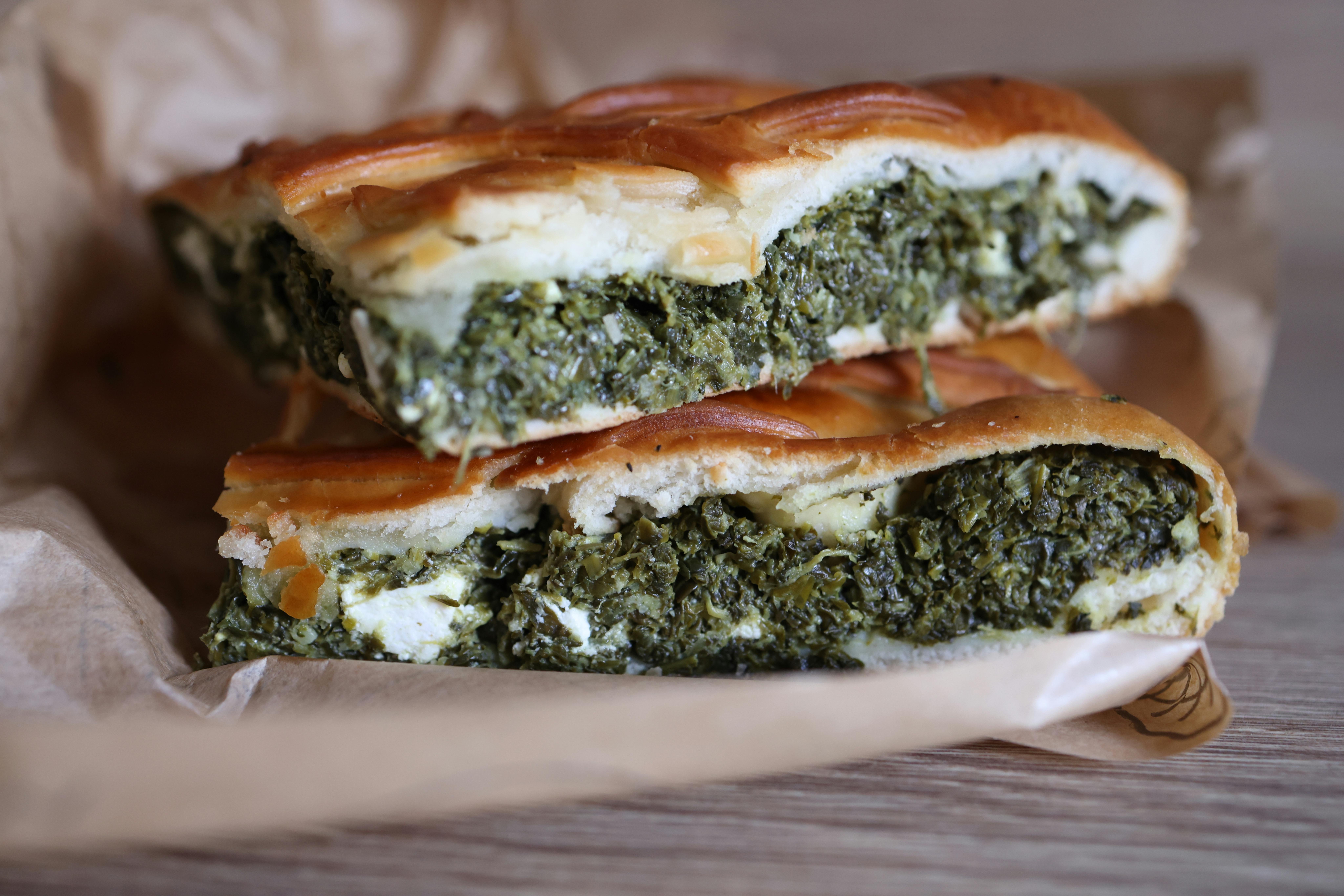
There’s a certain joy in the first signs of spring – the return of soft sun, wild greens and the slow shrugging-off of winter’s heaviness. In Greece and Cyprus, one dish captures this transition more deliciously than most: spanakopita.
Flaky, buttery and packed with bright green spinach and sharp cheese, spanakopita is both a staple of the Greek and Cypriot kitchen and a seasonal celebration wrapped in filo.
Though widely eaten year-round today, spanakopita’s origins are rooted in seasonal, practical traditions. In rural villages, home cooks would make use of whatever was fresh – and in spring, that meant wild greens. Spinach, of course, was common, but so were other foraged herbs and leaves like chard, sorrel, or amaranth. These were chopped, salted, mixed with tangy feta or local cheeses, and wrapped in thin pastry to form pies that could feed a family for days.
Historians suggest that spanakopita may have roots in the Byzantine era, with culinary links to Ottoman and Levantine pies. The use of thin, layered pastry can be traced across the region – from Turkish börek to Middle Eastern fatayer. But in Greece and Cyprus, the evolution of spanakopita became uniquely local, each region developing its own version, shaped by the ingredients available and the tastes of the area.
In Epirus, pies might be heavier and more rustic; in Crete, lighter and filled with wild herbs; in Athens, you’re more likely to find the neat, golden triangles familiar from bakeries around the world. And in Cyprus, spanakopita often features a thicker, more bread-like pastry and is generously filled with local greens and tangy anari or feta, reflecting the island’s rustic, home-style approach to pies.
The classic filling combines spinach, feta cheese, eggs, onion or leek, and sometimes a scattering of fresh dill or mint. But even this varies. In Lenten or fasting periods, dairy may be omitted. In mountain villages, feta might be replaced with myzithra or kefalotyri. And for home cooks with gardens, spanakopita becomes a blank canvas for whatever greens are abundant.
What has made spanakopita endure is not just its flavour, but its flexibility. It can be a main meal or a side dish, a picnic snack or a Sunday centrepiece. It’s equally at home in a bakery window or wrapped in foil for a school lunch. And though it speaks with a distinctly Greek accent, it has found fans all over the world – a food that transcends borders while keeping its roots.
Forestry department criticised over Akamas kiosk controversy 4:53 AM (5 hours ago)
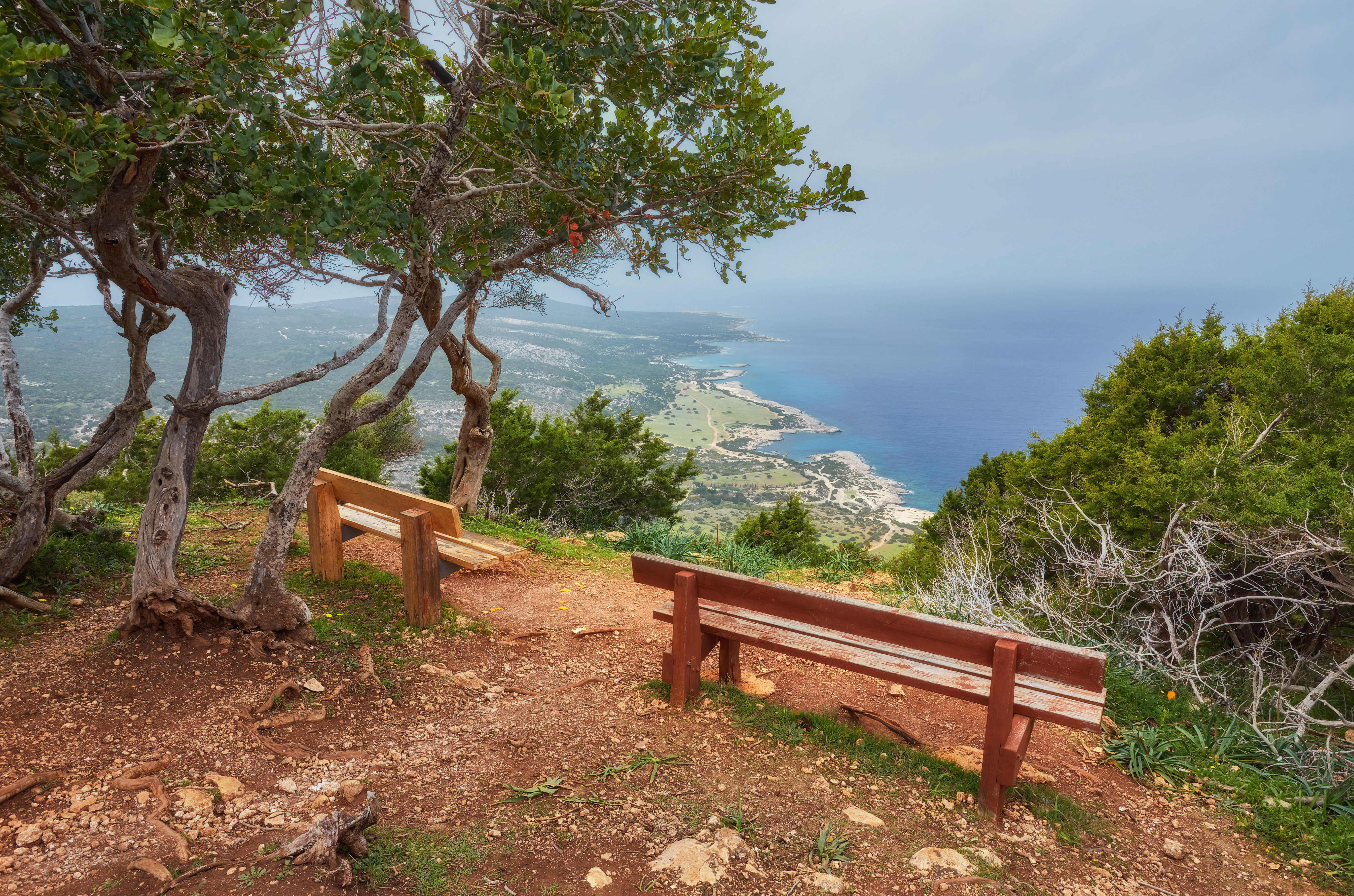
The Cyprus federation of environmental organisations (Opok) has expressed its disappointment with the forestry department’s handling of the Akamas kiosks issue, accusing the department of ignoring institutional violations. In a statement, Opok raised concerns over the continued disregard for legal breaches in the area, despite recent efforts to address the situation.
Following mounting pressure, the cafeterias installed within the Akamas national forest park were removed. Opok viewed this as a partial victory for the protection of the region. However, the group remains deeply concerned, pointing out that the forestry department still fails to acknowledge the legal violations of binding regulations.
Opok highlighted specific breaches related to the special ecological assessment report and provisions outlined in the strategic environmental impact study for the Akamas sustainable development plan. The environmental group also referenced violations of special conditions attached to the phase A road improvement project in the area.
The federation argued that these documents serve as crucial tools for nature protection and environmental legality. Yet, they remain largely unexplored and have been effectively accepted by the responsible authorities. Opok criticised the forestry department for choosing to disregard both its legal responsibilities and the very essence of sustainability and the protection of Akamas’ unique natural heritage.
This ongoing issue underscores a growing frustration over the management of one of Cyprus’ most treasured natural sites. Opok is calling for greater accountability and a stronger commitment to preserving the environment.
‘My brand is about effortless style with a soul’ 4:30 AM (5 hours ago)

“Sustainability isn’t a destination, it’s something you constantly evolve with,” says Georgia Moditi speaking about her journey to establish a Cypriot brand for sustainable womenswear.
As a fashion design graduate with a decade of experience as a stylist, Moditi lived the fast-paced world of fashion shoots and trends before officially launching her brand. “Deep down, my heart longed to create something of my own. So, in my early 20s, in an attempt to make this happen, I juggled three jobs for a few years: my full-time position at the magazines, my brand that was just starting, and teaching sewing and pattern cutting, which I had been doing for one to two years already with weekly groups,” says Moditi. By 2014, she had officially launched Georgia Moditi.
“At its core, my brand is about slow, thoughtful fashion – garments that are effortless, comfortable, and timeless. I wanted to create clothes that move with you, fit beautifully and become staples in your wardrobe,” she adds. “I’d say my brand is about effortless style with a soul. I love designing pieces that are easy to wear, but still feel special. Comfort is key, but so is character. I want my clothes to feel like a second skin, something you reach for again and again. Fabric, it’s alive. It moves, it changes, it tells a story. There’s something magical about working with it,” she adds.
Yet her work is not just about style; it is also about sustainability and transparency. “For me, sustainability isn’t just a buzzword, it’s about respect. Respect for the materials, the process and the people involved. I make small runs, minimise waste, and use fabrics that feel good both on the skin and in terms of impact. Transparency matters because people should know where their clothes come from and who made them,” explains Moditi.
To this end, she advocates that sustainable living is all about being mindful about what we buy, how we use it, and what we leave behind. And her field, sustainable fashion, has the same idea: choosing quality over quantity, repairing instead of replacing, and appreciating the craftsmanship behind every piece. “For me, they go hand in hand. It’s not about being perfect but about making better choices, little by little,” says Moditi, and “it’s been a journey, I’m always learning. Each collection, each decision brings new ways to reduce waste, refine materials, and be more mindful,” she adds.
In addition to her line, Moditi has been running weekly group lessons in her studio for many years. She also co-created Slow Sew with Anna Apostolou, Saturday sewing workshops designed for a more relaxed, one-time experience. “While the workshops are mainly hands-on, sustainability naturally comes up. When people learn how to sew, they start viewing clothes differently, appreciating the effort behind them, and are less likely to treat fashion as disposable,” says Moditi. “We occasionally run workshops on upcycling or mending clothes, which are both essential aspects of sustainable fashion,” she adds.

Admittedly, establishing an independent fashion brand in a small country as Cyprus was not without its challenges. “It’s definitely not the easiest place to start a brand, especially when most people shop from malls and big retailers. But that also makes it more special when someone chooses a handmade, locally made piece. The challenge is finding those people who appreciate craftsmanship and showing them that fashion can be personal, unique, and more sustainable,” she asserts. “It’s tough because resources are limited, but it also makes everything more intentional. I work in small batches, connect closely with my customers, and make sure everything is done with care. It’s a different kind of fashion business, one that’s slower but more meaningful,” she adds.
So how does sustainable fashion work? For Moditi, the best way is to show, not preach. “I create pieces that are timeless and built to last, I teach people how to make and mend their own clothes, and I share the process behind what I do. When people see that sustainable fashion can be stylish, practical, and personal, they naturally become more interested in it,” says Moditi.
Unintentionally, but practically, Moditi’s collections are designed for women and made by women in Cyprus. “It wasn’t necessarily planned that way, but it makes sense,” she admits. “There’s something powerful about women creating for women. It’s a space of understanding, connection and support. I naturally design for women because I understand their needs, and I work with women because I believe in uplifting local talent,” she says.
There’s a lot behind Moditi’s work, and it’s taken years of experience to get to where she is today. “Leaving the media world to start my own brand was definitely a leap, but I knew it was the right time. Working in magazines taught me invaluable skills like storytelling, branding and understanding how people connect with fashion – all of which shaped my brand. During that time, I styled many of Cyprus’ prominent women in show business – actors, singers, politicians, and more. Working with such a diverse range of body types and styles and figuring out how to dress them so they’d feel and look confident, gave me a deeper understanding of how clothes should fit different bodies. An insight that really helped me in designing my own line.”

So does she believe that she inspires women? Whether through dressing them or merely sharing her sustainable fashion with them? “I wouldn’t say it’s something I actively set out to do, but if my journey or work inspires other women, that’s truly humbling. I believe that when you follow your passion and stay true to your goals, it can have a positive impact on those around you. If my story or the things I create encourage others to pursue their dreams, then I’m really grateful for that.”
Slow sew to enhance sustainable living
As part of her initiatives to introduce sustainable living and sustainable fashion, Georgia Moditi organises weekly workshops in her studio in Kaimakli in Nicosia, in which she invites participants to learn how to sew unique pieces. Established her colleague Anna Apostolou, and now known as Slow Sew, these workshops last a maximum of four hours (depending on participant experience) and focus on enabling those taking part to have a hands on experience and sew a unique piece of clothing, taking it home with them at the end of the day.
With no particular experience required, the workshops are offered in a relaxed environment, in small groups, for those who wish to further their sewing knowledge as well as having the opportunity to make an item of clothing from start to finish, to their own measurements. These workshops are “easy peasy steps towards sustainable living,” Moditi says. “Sewing is a learned skill – anyone can learn it! The idea that you need to be creative to sew is a total myth.”
From time to time, workshops divert from merely sewing, and concentrate on needle felting, knitwear and even Origami bags. Otherwise, workshops on how to create your own godet skirt, genderless sweatshirt or gathered dress have been delivered in the past.
On Saturday, Moditi will guide participants through sewing their own jumpsuit, ideal for the spring and summer season.
And on April 26, participants will have the opportunity to create a reversible Apron Top, a trendy summer crossed back top, once again ideal for the upcoming season.
All materials/ fabrics, threads, patterns and sewing machines are provided in the cost of the workshop which is €50/60. Considering these are workshops for small groups, it is recommended that people interested in participating book their spot early, on 99 514374 or 99 761299. These workshops also make great gifts for loved ones with vouchers provided upon request. As Moditi says, these are “perfect for the creative soul in your life!”.
The Slow Sew initiative also provides products for what Moditi estimates to be a growing sewing community on the island. These include mugs, stickers, posters, tote bags and postcards.
You can also find out more information about Moditi’s work and her initiatives by following Slow Sew on Instagram or visit the website https://georgiamoditi.com/
Guardians of the glades: protecting Europe’s forests against climate change 3:22 AM (7 hours ago)

EU-funded researchers are combining cutting-edge research with sustainable forestry practices to protect our forests and preserve the many environmental benefits they provide.
By Michaela Nesvarova
The Făgăraș Mountains in southern Romania are home to one of Europe’s few remaining primary old-growth forests.
These forests are still untouched by human activity and boast a rich variety of trees, from the heat-tolerant oaks of the lowlands to the coniferous forests in the high mountains.
In this still pristine protected area, EU-funded researchers are working with local communities and the World Wildlife Fund to support effective forest management.
“Forests provide us with a lot of benefits, and we are in danger of losing these benefits,” said Dr Sorin Cheval, senior researcher at Romania’s National Meteorological Administration. Cheval is leading a four-year EU-funded initiative called OptFor-EU, which started in 2023 and runs until 2027.
The initiative brings together experts from Austria, Germany, Italy, Lithuania, the Netherlands, Norway, Spain, Romania and the United Kingdom. The research team aims to make sure that forest management decisions across Europe take account of the key role that forests play in protecting our environment and offsetting some of the effects of climate change.
Forests make up 43 per cent of EU territory and are among Europe’s most valuable natural assets, playing a crucial role in capturing carbon, regulating ecosystems and protecting biodiversity. Beyond their beauty, they act as powerful carbon sinks, absorbing CO₂ from the atmosphere and helping to combat climate change.
According to Cheval, this is why the OptFor-EU team is focusing not only on how climate change impacts forests, but also on how forests can be best used to reduce the negative impact of climate change.
“Forests can survive without humans, but we cannot survive without forests,” said Dr Francesca Giannetti. She is a researcher specialising in forestry and remote sensing, affiliated with the University of Florence and working with Cheval in the OptFor-EU project.
Giannetti’s research focuses on the application of 3D remote sensing technologies in precision forestry. Remote sensing is used for mapping forest growth and assessing how urban forests are contributing to the reduction of air pollution.
Integrating innovative technologies into forest management will help to better inform decision-making when it comes to protecting these precious natural landscapes.
According to Gianetti, there are many challenges that forest managers have to keep in mind every day. They need to make sure that enough wood is produced, while also worrying about erosion, natural disasters and lack of water. At the same time, they need to account for the impacts of climate change.
These challenges are compounded by the fact that forests grow and change in a span of decades.
“In forest management, we don’t work with years or months like in agriculture. We have to think 80 to 100 years into the future,” said Giannetti. That is why we need a system to support forest management now so that we can make better decisions for the future, she added.
Together with forest managers and other stakeholders, the OptFor-EU researchers are developing a decision support system that will be made freely available to those involved in forest management. The aim is to help them make the best-informed decisions possible.
Proper management is essential in this regard, said Dr Alessio Collalti, a senior researcher at the National Research Council of Italy, specialising in forest ecology, carbon and nitrogen cycles, and vegetation modelling.
“In recent years, we have discovered that management has a far bigger impact on forest ecosystems than climate change itself,” Collalti said.
“We need good and adapted management schemes to improve forest resilience,” he said, referring to forests’ ability to cope with challenges and return to health after a serious disturbance like a drought or a storm.
The OptFor-EU support system will include ready-to-use products, services and guidance aligned with the goals of the Paris Agreement on climate change, the European Green Deal and the new EU Forest Strategy for 2030.
Data used to build the system will be drawn from eight case studies being carried out in a wide variety of forested areas across Europe. These range from the ancient semi-natural woodland of Wytham Woods in the UK to the hardy resin-producing Extremadura pine forests of Spain.
Also included are recognised nature reserves in the Florentine mountains in Italy, the Čepkeliai – Dzūkija National Park in Lithuania and protected forests in Austria, Germany and Norway.
“We are conducting the eight case studies to cover all forest types. This is the first time there is such an EU-wide overview,” said Deborah Hemming, an OptFor-EU scientist based at the Met Office – the UK’s national meteorological service.
In Romania, Dr Nicu Constantin Tudose, a forest engineer and station director at the Marin Drăcea National Institute for Research and Development in Forestry, is a key contributor to OptFor-EU’s Romanian case study.
“Old-growth forests, defined as ecosystems that have evolved over extended periods without significant anthropogenic or natural disturbances, are exceedingly rare in Europe,” he said.
Sadly, according to Tudose, even these ancient areas are suffering nowadays as a result of the increasing frequency and intensity of extreme climatic events, particularly prolonged droughts. This is a worry for forest managers across Europe.
“In our study, 95 per cent of the forest managers interviewed by the OptFor-EU team identified this issue as their main concern,” said Tudose.
This demonstrates the urgent need for targeted interventions to support forest resilience.
“We need to provide forest managers with a clear long-term understanding of the interactions between climate and forest ecosystems,” he said.
This article was originally published in Horizon, the EU Research and Innovation Magazine.
Cyprus awaits official word after Electra gas disappointment 2:59 AM (7 hours ago)

Cyprus is waiting for an official update on Monday after disappointing news from a major offshore drilling project. The drilling at the “Electra” target in block 5 of the island’s exclusive economic zone (EEZ) has not produced the expected results.
Energy Minister George Papanastasiou confirmed that the ExxonMobil and QatarEnergy consortium will provide an official statement by Monday, in response to a report suggesting that the drilling had not found marketable quantities of natural gas. The report, published by the Middle East Economic Survey (MEES), said that while gas was present, it was not in the amounts needed for commercial use.
This news comes as a major blow, as there had been high hopes for the Electra site, with estimates suggesting it could hold up to 30 trillion cubic feet (tcf) of natural gas, a discovery that could have been a game-changer for Cyprus.
The drilling, which began in January using the Valaris DS-9 rig, faced technical problems due to high pressure underground, which delayed results. The rig will now move to block 10 to drill the “Pegasus” target, though expectations for this site are now much more modest.
Block 10 also holds the “Glafkos” deposit, with an estimated 3.2 tcf of gas. In the northern block 6, Italian company ENI and France’s TotalEnergies have found more gas deposits, including “Kronos”, “Zeus”, and “Calypso”. Development of “Kronos” is progressing, with plans to export gas to Egypt and the first production expected in 2027.
During a recent visit to the United States, President Nikos Christodoulides met with ExxonMobil and Chevron executives. They discussed speeding up the development of gas fields, especially the “Aphrodite” deposit, which holds 3.5 tcf. A pipeline to Egypt is planned for this project.
Despite this, the Electra result is a major disappointment. The site had been expected to help build a liquefied natural gas (LNG) plant in Cyprus, potentially lowering energy costs on the island.
Experts are now urging Cyprus to focus on practical energy solutions. While offshore drilling has attracted attention, the country’s electricity grid needs an upgrade to support solar energy projects. The high cost of energy, driven by a market cartel, continues to hurt ordinary Cypriots.